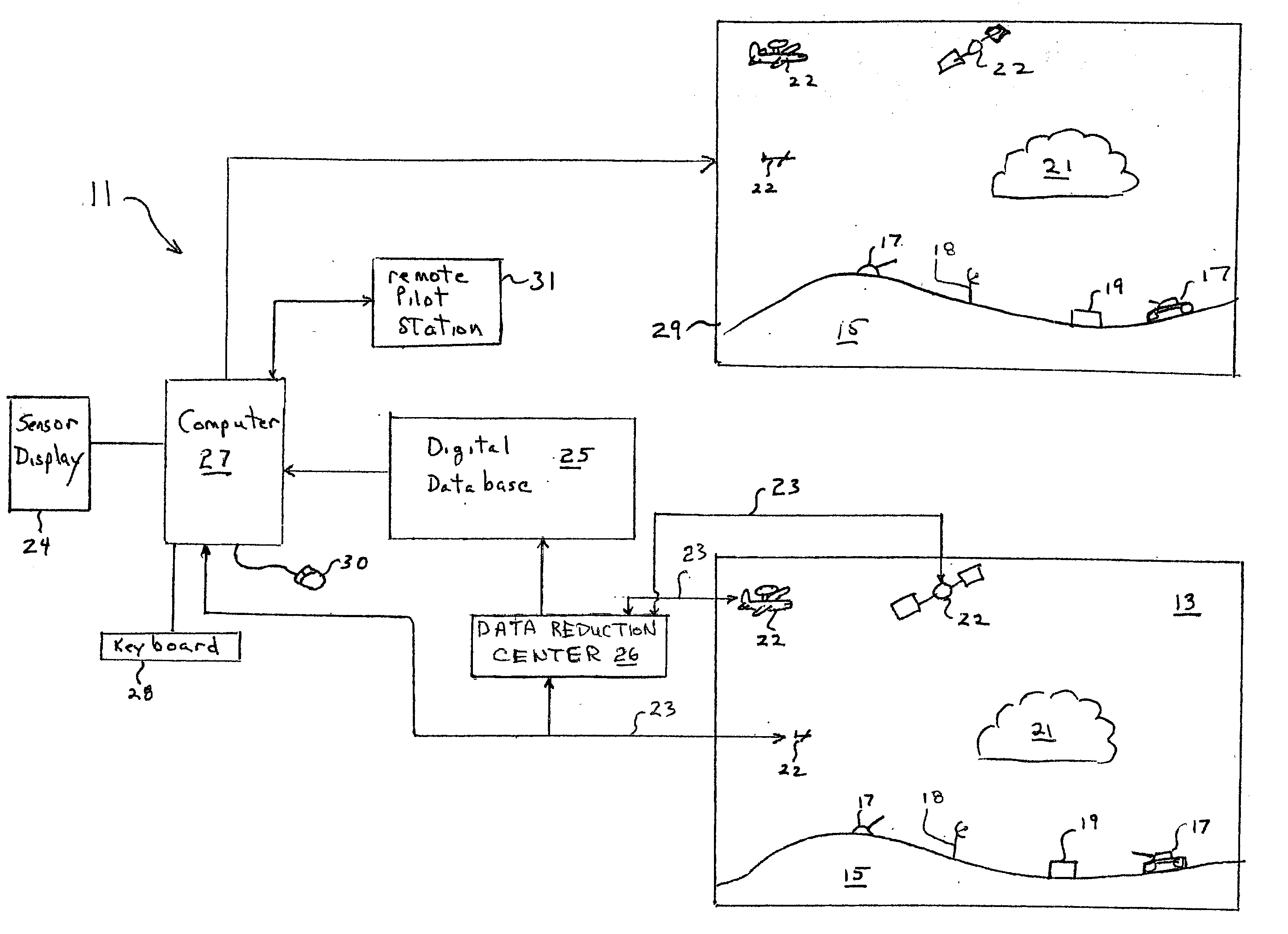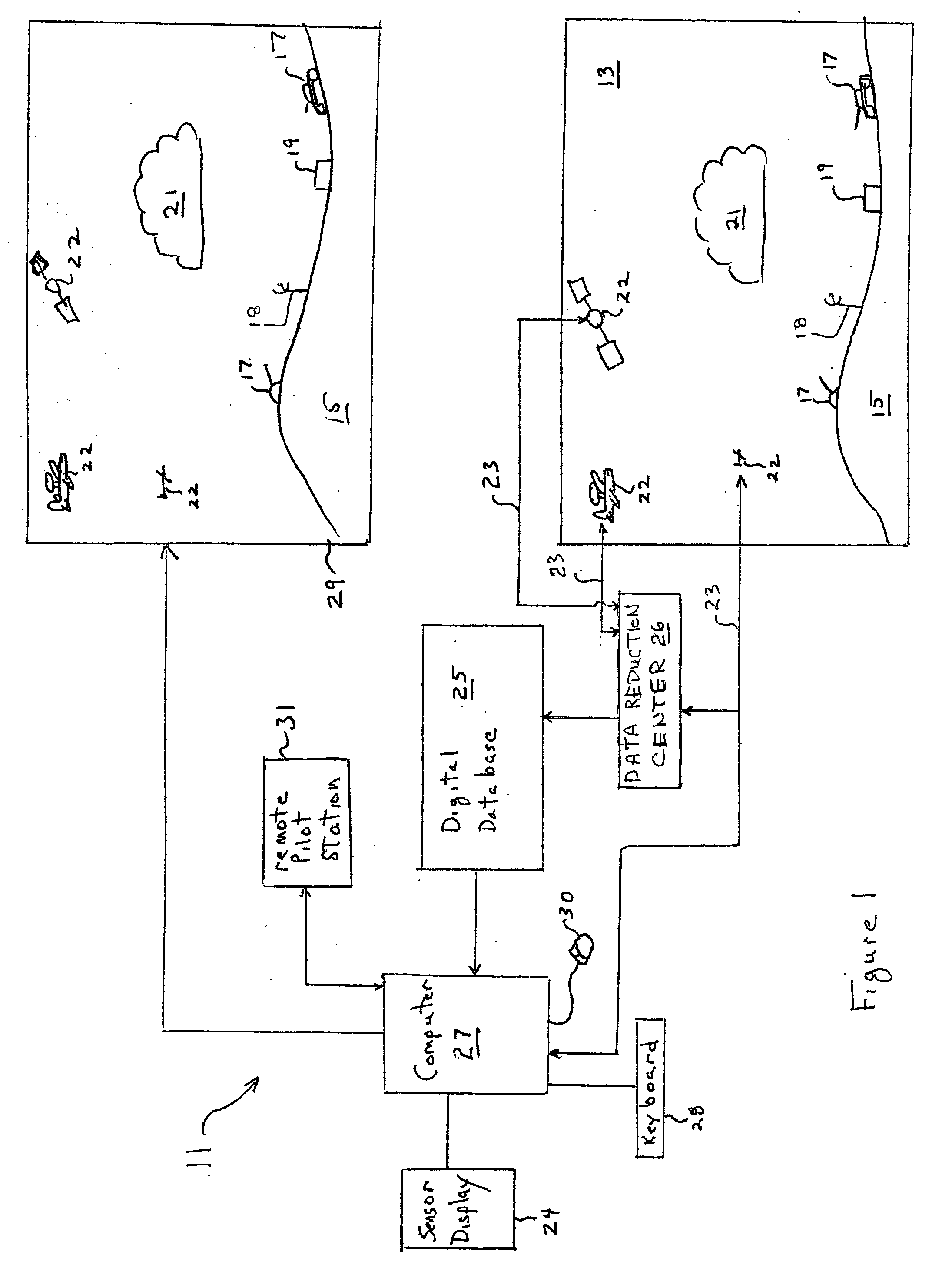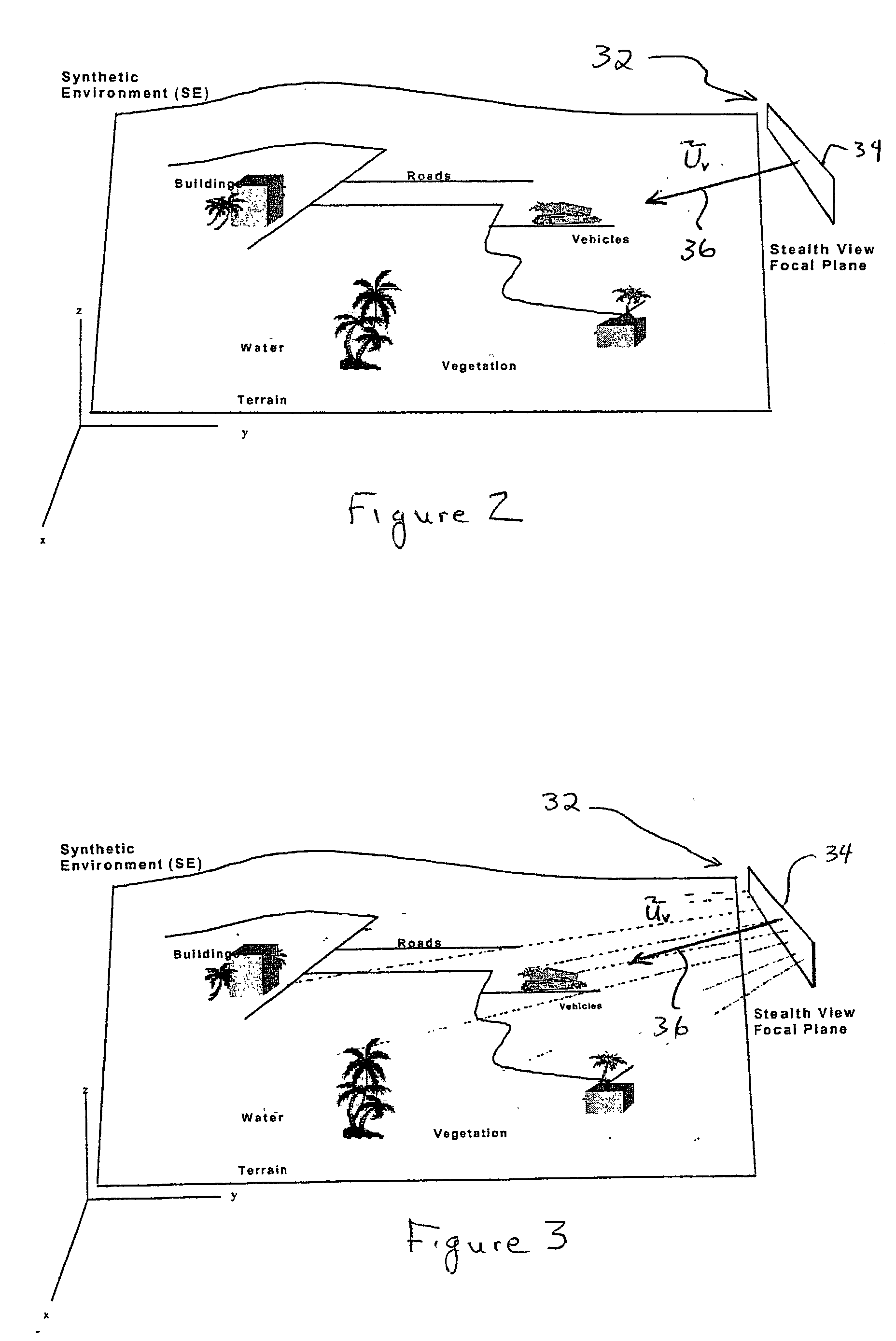Method and apparatus for determining the geographic location of a target
a geographic location and target technology, applied in image analysis, surveying and navigation, instruments, etc., can solve the problems of inability to perform additional mathematical transformations, inability to perform standard registration processes, and inability to collect information
- Summary
- Abstract
- Description
- Claims
- Application Information
AI Technical Summary
Benefits of technology
Problems solved by technology
Method used
Image
Examples
Embodiment Construction
)
[0025] Referring to FIG. 1, a block diagram is provided that depicts the elements of one embodiment of an apparatus, generally indicated at 11, for determining the exact location of a target on a battlefield 13. As shown in FIG. 1, the battlefield has terrain 15, targets 17 at different locations, man-made structures 19, electronic warfare assets 18 as well as atmospheric conditions 21, such as natural conditions like water vapor clouds, or man-made conditions such smoke or toxic gas-like clouds that may or may not be visible to the naked eye. The apparatus 11 includes at least one information gathering asset 22 having one or more sensors for gathering information from the battlefield 13 in real-time. The information gathering asset 22 comprises, for example, an AWAC or the like, a satellite, a Remotely Piloted Vehicle (RPV) as well as forward observers (not shown) and any other known arrangement for gathering information from a battlefield. The one or more sensors on the asset 22 ...
PUM
 Login to View More
Login to View More Abstract
Description
Claims
Application Information
 Login to View More
Login to View More - R&D
- Intellectual Property
- Life Sciences
- Materials
- Tech Scout
- Unparalleled Data Quality
- Higher Quality Content
- 60% Fewer Hallucinations
Browse by: Latest US Patents, China's latest patents, Technical Efficacy Thesaurus, Application Domain, Technology Topic, Popular Technical Reports.
© 2025 PatSnap. All rights reserved.Legal|Privacy policy|Modern Slavery Act Transparency Statement|Sitemap|About US| Contact US: help@patsnap.com



